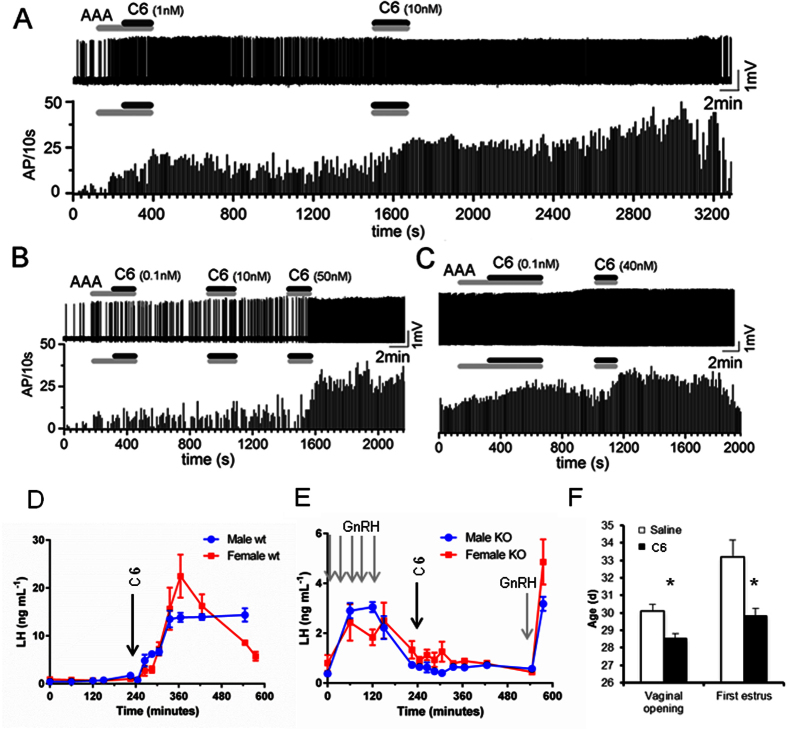Figure 3. In mice C6 excites GnRH neurons, induces LH secretion by a KiSS1R-dependent mechanism and its repeated administration advances puberty.
(A–C) Cell-attached voltage recordings of three GnRH neurons from adult female GnRH-GFP mice (with frequency histograms below each voltage recording) showing the dose-dependent activation of GnRH neuron firing by 0.1–40 nM C6. A cocktail of amino acid receptor antagonists (AAA, including kynurenic acid 2 mM, GABAzin 5 mM or bicuculline 10 mM) was applied before or with C6 as indicated by the grey bars. (D) Administration of C6 (arrow) to male or female mice in vivo induces a rapid and prolonged increase of LH plasma concentration in males and a transient LH surge-like in females. (E) In KiSS1R KO mice, GnRH priming (grey arrows) induces an increase in plasma LH concentrations over basal in both males and females. However, administration of C6 has no effect. Further stimulation with GnRH (grey arrow) after C6 application still induces an increase of LH confirming that the pituitary is still responsive. Data are the mean ± SEM, N = 4 for males and N = 7 for females. (F) Daily injection of C6 (0.15 nmol/mouse) from postnatal day 26 to 30 significantly advanced vaginal opening (Mann Whitney test P = 0.0014) and first estrus (Mann Whitney test P = 0.0036). Data are the means ± SEM, N = 10.

